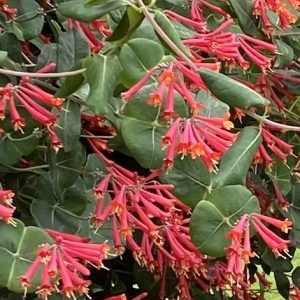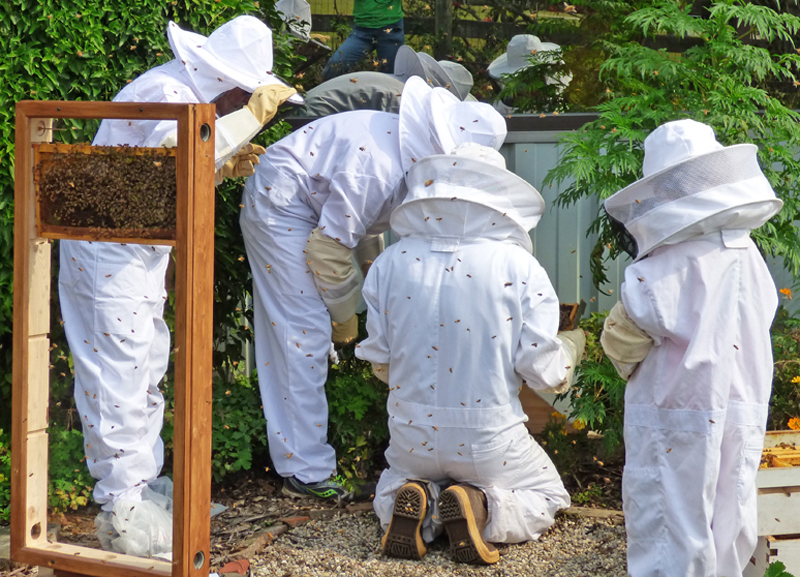
Everyone loves honey, right? Yum! We all know that honey is made by busy little honey bees, whose numbers are dropping drastically around the country. One of our wonderful Eagle Scouts at the Nature Preserve is helping to promote bee welfare. North Tullis is an Eagle Scout who, working with the assistance of his father Shawn Tullis, a beekeeper, captured a hive of honey bees, and transferred them to a glass-sided hive in the bird observation room at the Nature Center.
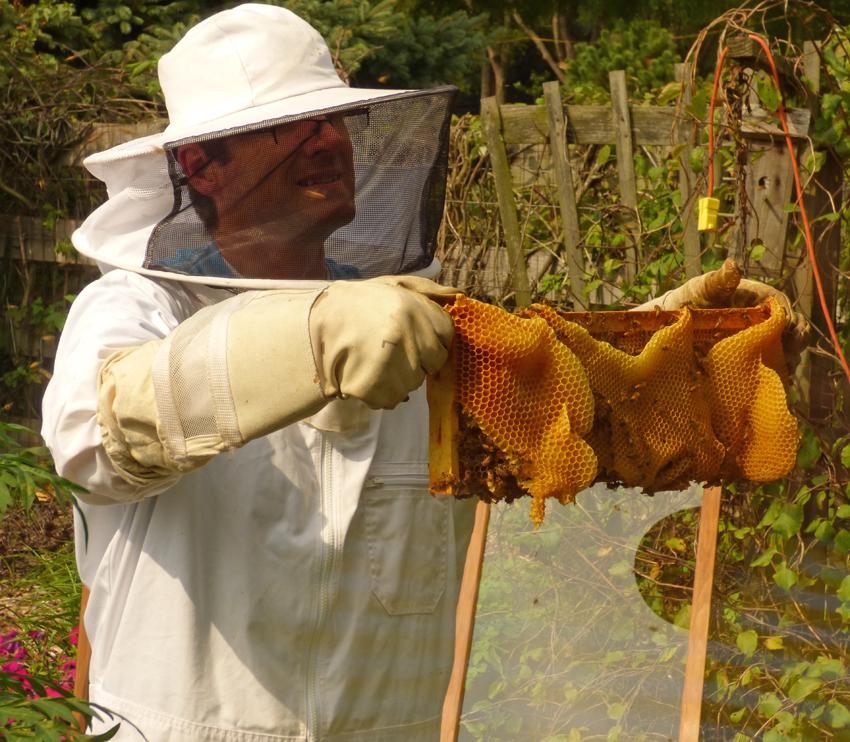
It is essential to transfer the queen bee from the former hive box to the new hive, so our beekeepers searched each frame in the old hive thoroughly. Imagine looking for one bee among thousands, even if she is larger than all the others! As the frame was lifted from its position, the honeycomb and honey would drip down.
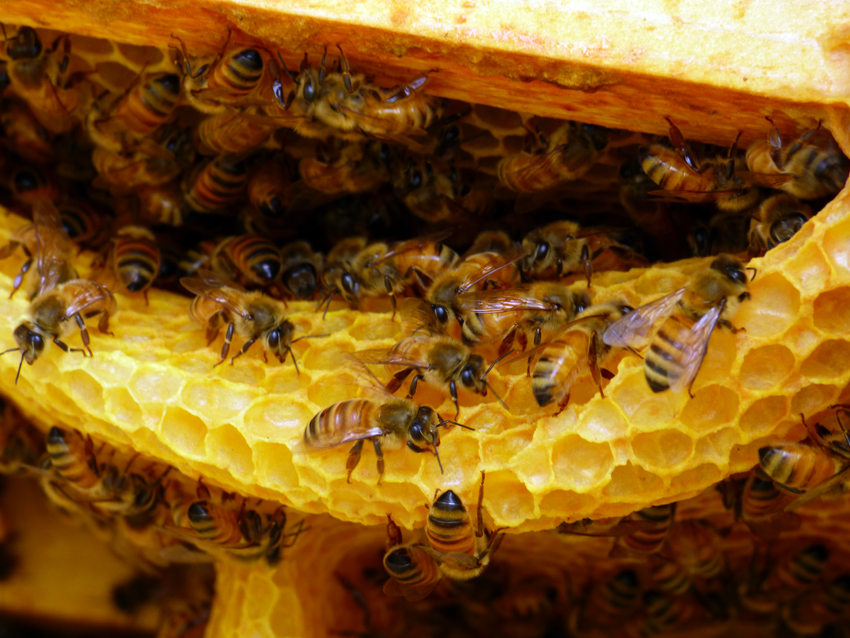
Honey bees are not native to the Western Hemisphere, but were brought by European settlers. There are over 4,000 species of native bees, but honey bees are social and the hive can be moved from location to location. A colony generally contains one queen bee, a fertile female; seasonally up to a few thousand drone bees or fertile males; and a large seasonally variable population of sterile female worker bees. Details vary among the different species of honey bees, but common features include:
Eggs are laid singly in a cell in a wax honeycomb, produced and shaped by the worker bees. Larvae are initially fed with royal jelly produced by worker bees, later switching to honey and pollen. The exception is a larva fed solely on royal jelly, which will develop into a queen bee. The larva undergoes several moltings before spinning a cocoon within the cell, and pupating. Young worker bees clean the hive and feed the larvae. When their royal jelly producing glands begin to atrophy, they begin building comb cells. They progress to other within-colony tasks as they become older, such as receiving nectar and pollen from foragers, and guarding the hive. Later still, a worker takes her first orientation flights and finally leaves the hive and typically spends the remainder of her life as a forager. Worker bees cooperate to find food and use a pattern of “dancing” (known as the bee dance or waggle dance) to communicate information regarding resources with each other; this dance varies from species to species, but all living species of Apis exhibit some form of the behavior. If the resources are very close to the hive, they may also exhibit a less specific dance commonly known as the “Round Dance”.
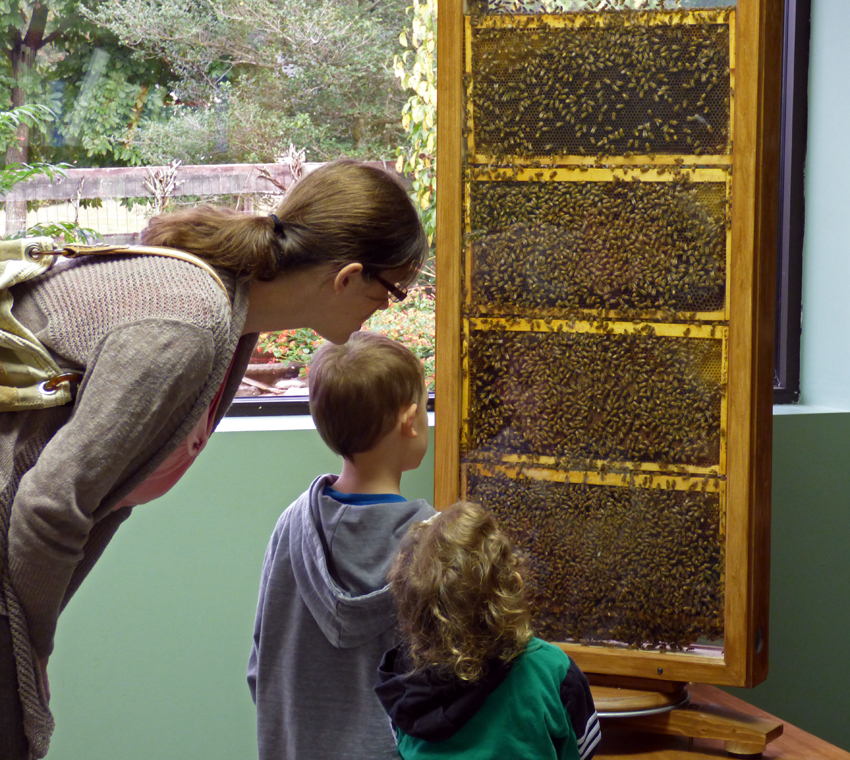
Our glass-sided hive is securely sealed so no bees escape inside the building, but they enter and exit the hive through a transparent tube through the wall. In cold climates honey bees stop flying when the temperature drops below about 50 °F and crowd into the central area of the hive to form a “winter cluster”. The worker bees huddle around the queen bee at the center of the cluster, shivering in order to keep the center between 81 °F at the start of winter (during the broodless period) and 93 °F once the queen resumes laying. The worker bees rotate through the cluster from the outside to the inside so that no bee gets too cold. The outside edges of the cluster stay at about 46–48 °F. The colder the weather is outside, the more compact the cluster becomes. During winter, they consume their stored honey to produce body heat. The amount of honey consumed during the winter is a function of winter length and severity but ranges in temperate climates from 15 to 50 kg (30 to 100 pounds).
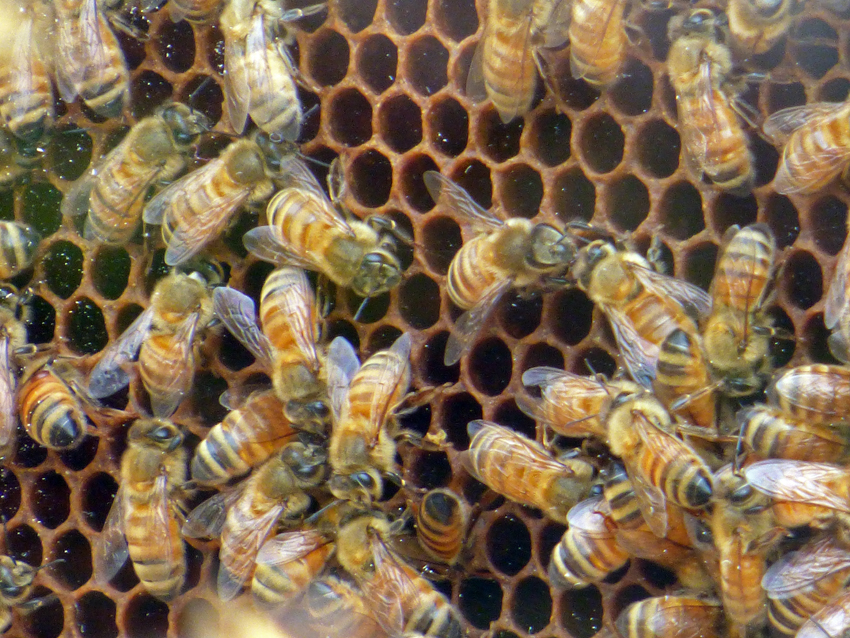
The next time you come to the Nature Center, bee sure to drop in and visit our bees. That’s what the buzz is all about!
Naturally yours,
~denapple

